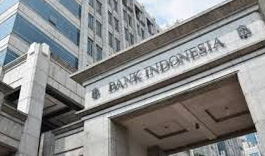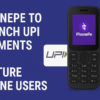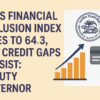Indonesia is taking initiatives to usher in open banking as the country’s central bank has recognized the definite advantages of the system in creating a digital economy:

It was in 2016 that Indonesia made its first move towards modernizing/digitizing its payments systems when the country’s central bank, Bank Indonesia, announced the setting up of the Indonesia Payment Gateway System or Sistem Pembayaran Indonesia (SPI) and a regulatory sandbox for fintechs. Subsequently it came out with a blueprint for SPI 2025, containing 5 initiatives. One of this was the implementation of open banking in the country through open API standardization, which would include the technical, security and the governance sides of the initiative.
Another financial services regulator in the country, Otoritas Jasa Keuangan, meanwhile, has granted licenses to some 150 Indonesian P2P or fintech lending platforms until December 2020. Now alongside SPI 2025, OJK has launched its Financial Sector Master Plan 2021-2025 and one of the 5 main priorities of the plan is to support innovation and digital financial transformation, including open banking.
DATA PROTECTION
Indonesia has in fact put in place data protection measures way back in 2016 when the country’s Ministry of Communications and Informatics had come out with what is termed as Perlindungan Data Pribadi (PDP) to regulate and ensure protection of data in the context of data retrieval, collection, analysis, broadcasting etc for entities that provide gateway systems or open banking enablers.
As in other countries, where open banking has matured, in Indonesia, too market-driven initiatives from banks, fintechs and other non-regulator parties play a key role in the implementation of open banking. It is a fact that from 2015, top banks like BCA, BRI, BNI, Mandiri, Permata, CIMB Niaga, Bukopin, BTN, BTPN and Panin Bank had started to offer open access to their APIs for fintech companies to explore with. Most banking institutions have segmented their API products in certain categories for different use cases, such as account verification, payment initiation, real-time balances, historical transaction, and others.
FOCUS ON PAYMENTS
One clear use cases of open banking in the country has been in the payments domain. Payment has been a major focus within the open banking strategies and there is no dearth of tech companies like Midtrans, Xendit and Brankas, which enable the open banking payment system to be adopted by merchants that use their services. There are also firms that focus on financial data APIs for data verifications and account aggregation. These fintechs are catalysts in the implementation of open banking by providing other companies with services, like integrating key APIs.
As the financial ecosystem is getting digitized, there are bound to be customer demands in terms of payment initiation, online loans and e-commerce utilization. Banks can meet these demands only with innovations and open banking is key in the scheme of things to maximize business growth and financial inclusion in Indonesia. And the country is moving in the right direction as it is expected to fully implement a standardized open API system in 2025.
SECURITY A CONCERN
Meanwhile, Bank Indonesia has called on the financial services industry to develop an open banking system to boost financial inclusion. However, what is of concern for the regulator, the banks and the customers is the lack of security standards and data protection regulation. Experts feel this can indeed hold up a full implementation of the initiative as also the efforts in creating a digital economy.
But the central bank is in the process of creating regulations on open banking standards, which will oblige banks to share their data with fintech companies by creating their own APIs from their own systems. It is expected that open banking platform will see traditional banks help digital players reduce technical costs by sharing KYC metrics or loan affordability metrics in an API. The initiative may reduce borrowing costs for MSMEs as banks could access MSMEs’ data provided by digital firms.
Experts, however, feel that the central bank should be extra vigilant about cybersecurity risks while framing regulations on open banking and the system will need to be tightly regulated to ensure security.
A STRATEGIC PARTNERSHIP
In a recent development Brankas, an open banking technology provider in Southeast Asia, has concluded a strategic partnership with Southeast Asia-based payments company, 2C2P to introduce its latest open banking solution to Indonesia. Through Brankas’ API integration, customers of 2C2P’s merchants will be directly connected to major Indonesian banks including Bank Central Asia (BCA), Bank Mandiri, Bank Negara Indonesia and Bank Rakyat Indonesia. The partnership enables Indonesian businesses to offer customers a direct debit option during the checkout process to make payments from their personal banking accounts with the banks immediately. Since the payment is authenticated directly between the consumer and the bank, merchants can avoid higher transaction costs, and chargebacks generated due to fraud or an inability to capture funds.







